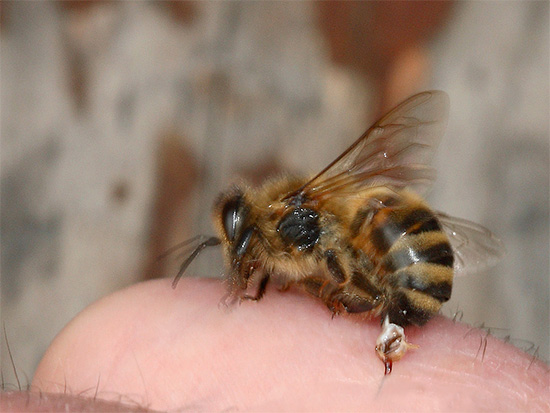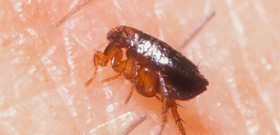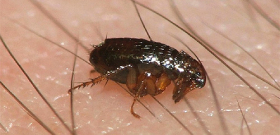
During the year, dozens of different types of insects can sometimes attack a person, and each such bite has its own consequences - from almost imperceptible to very pronounced. How the victim reacts to an insect attack depends, firstly, on the type of arthropod, and secondly, on the individual sensitivity of the person himself.
Often, insect bites do not require any special treatment - their effects go away on their own within a few days. However, this is not always the case, and in certain cases, treatment may still be required.
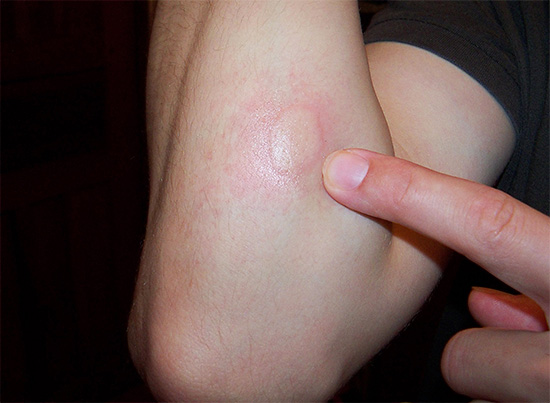
Here are some examples:
- bites a poisonous or even just a stinging insect - the consequences in this case can be very serious, up to severe allergic reactions, anaphylactic shock, internal hemorrhages and death;
- an insect bite turns out to be infected - treatment in this case sometimes requires hospitalization, since some blood-sucking parasites are able to carry pathogens of deadly human diseases (encephalitis, borreliosis, typhoid, etc.);
- the victim has a high individual sensitivity to insect bites (some people even react to mosquito attacks with serious edema) - it is in such cases that meetings, for example, with stinging insects can be very dangerous;
- an insect bite does not go away for a long time, and in its place dermatitis develops additionally or infection of the wound is observed due to constant scratching.
In any case, before treating insect bites, it is highly desirable to identify the "aggressors": sometimes, when attacked by poisonous arthropods, the use of special antidotes, which are very species-specific, is required. And in general, drugs used after insect bites have a very limited scope in which they have the greatest effect.
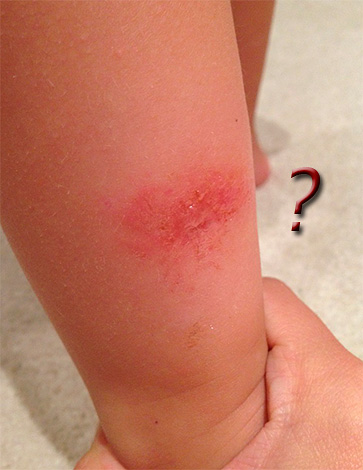
On a note
Generally speaking, spiders, centipedes and, for example, ticks, are not insects (insects have only 3 pairs of legs). However, ordinary people who do not go into entomological subtleties, their attacks are also referred to as insect bites.
In some cases, arthropod attacks can be difficult to visually distinguish from stinging plant lesions or, for example, from the manifestation of an allergic reaction. Unfortunately, there is no universal rule for a clear distinction between bites and other skin ailments.
As a rule, the bite is identified by a small point through which the sting or proboscis of the insect was introduced into the skin. In the future, it is around this place that characteristic inflammation and swelling of the tissues occurs.
The photo shows what a wasp sting looks like 2 minutes after the insect attack:

On a note
To account for the incidence and reasons for the population's appeals to medical institutions in the Russian Federation, a regulatory document of the 10th revision with the International Classification of Diseases (ICD-10) was adopted. According to ICD 10, an insect bite has the code W57 (meaning "Bite or sting by non-poisonous insects and other non-poisonous arthropods").This code is universal for hospitals around the world, and it is indicated in extracts and certificates. The ICD 10 insect bite code does not depend on the type of insect and the severity of the consequences.
In medical practice, there is no separate specialization of a doctor who treats insect bites. It all depends on the consequences of the bite. Allergists, toxicologists, infectious disease specialists, and in especially severe cases, surgeons and resuscitators can take part in the treatment. If the bite symptoms do not threaten the life and performance of the victim, treatment is usually carried out by a therapist.
Different insects, different bites
Different types of insects can bite a person for different purposes - for the purpose of self-defense, or as part of their parasitic lifestyle. Depending on this, two corresponding groups of bites can be conditionally distinguished:
- Bites of stinging and poisonous insects (as well as some other arthropods). These include bites (stings) of defending wasps, bees, hornets, ants, street bugs, spiders, centipedes. A meeting with these creatures sometimes ends with severe consequences for a person - for example, severe pain, inflammation and swelling, which even in themselves can be life-threatening, not to mention possible complications.

- Bites of parasitic arthropods - mosquitoes, bed bugs, fleas, lice, ticks, horseflies, bloodsuckers (for example, a moose flea) and others. Their attacks are usually not very painful, causing itching and slight swelling of damaged tissues. The greatest danger of such bites lies in the fact that by biting, these arthropods often transmit pathogens of serious diseases to humans.
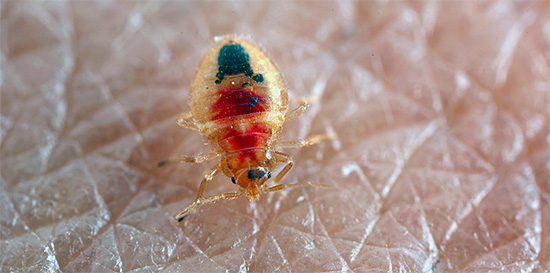
Review
“We just sighed with relief that the mosquito season is over, and here in mid-October we again have bite marks on our legs. Both my husband and I have all the feet bitten by fleas, in some places above the knee of the leg, and the child even found red dots on the body. These fleas crawl from the basement to all the lower apartments. They called the SES, now we are sitting, waiting for a showdown.
Svetlana K., Tver
Even among related insect species, bite symptoms can vary widely. For example, a bed bug bite looks like a red and slightly itchy swelling, while a smooth water bug bite is very painful, similar in symptoms to a wasp sting, and usually causes severe swelling. And the difference is that a bed bug bites in order to quietly get drunk at night with blood, and a smooth one bites a person only as part of self-defense.
The bites of the most frequently attacking insects are useful, as they say, to know “by sight”. Let's characterize and remember their main distinguishing features.
So, the bites of bed bugs, which have already been mentioned above, are usually located in clearly visible chains, due to which they are easily recognized:

The attacks of these insects are relatively safe: there are no reliable cases of transmission of any infections by them. However, occasionally a symptom of the bites of these insects, especially in children, can be a pronounced allergic reaction with severe swelling and fever.
The photo below shows bed bug bites on a child's leg:
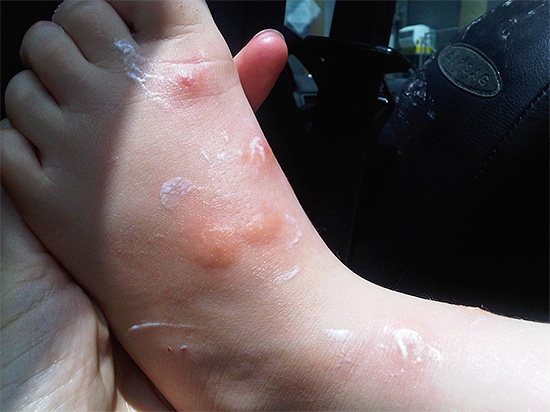
Flea bites are quite painful, and differ from bedbug attacks by a clearly visible red dot in the center (during a bite, the insect literally bites into the skin with its head - see an example in the photo below):

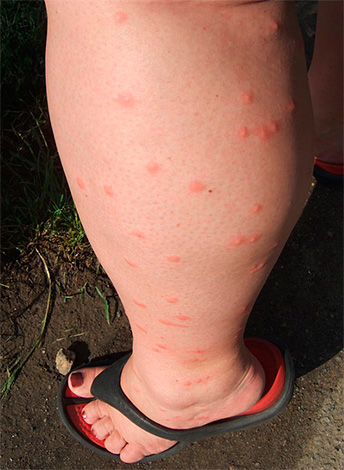
In rare cases, these insects can cause infection with very dangerous infections - plague, encephalitis, anthrax, brucellosis and some others.
Tick bites cause soft tissue hardening and a noticeable lump. Often, lesions remain at the site of tick penetration under the skin, characterized by a characteristic “ring” arrangement: a brightly colored center is surrounded by a pale ring, and then again by a red area:

Ticks are the cause of infection with encephalitis and no less dangerous Lyme borreliosis.
The stings of bees, bumblebees, wasps, hornets, centipedes, tarantulas, scorpions and some spiders are very painful, and lead to the development of severe tumors and edema in the victims, and can also cause serious intoxication and allergies.
The photo shows the consequences of a wasp sting in the face:
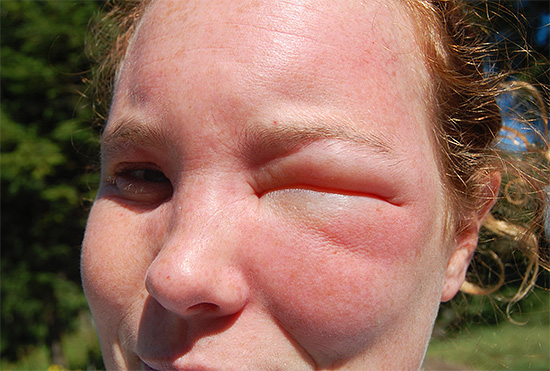
The bite of the karakurt spider, which prefers sandy habitats in the southern regions of Russia, is not very painful compared to other arthropods, but, however, leads to incredibly severe consequences affecting almost the entire body of the victim. In the event of a female attack during the mating season, the bite can lead to death.
And further: Convenient and efficient electric insect exterminators
Lice bites usually cause intense itching and mild redness. As a rule, these parasites attack en masse, which is why they can seriously deprive a person of peace. In addition, lice can infect their victims with typhus.
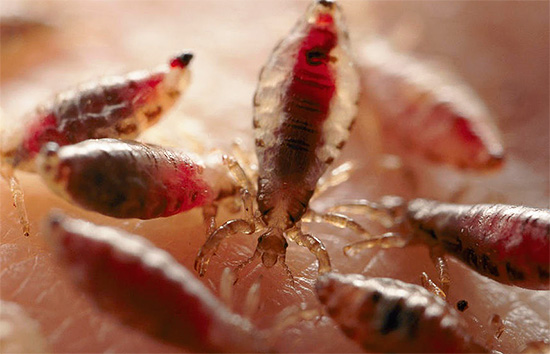
The bites of leeches and horseflies are "famous" for heavy bleeding and slight local swelling.
The bites of the so-called sand fleas are large painful bumps - this is the swollen body of an insect that has climbed under the skin. Fortunately, it will not be possible to meet sand fleas in our country, however, for example, on the beaches of Thailand and India, these parasites can be picked up.
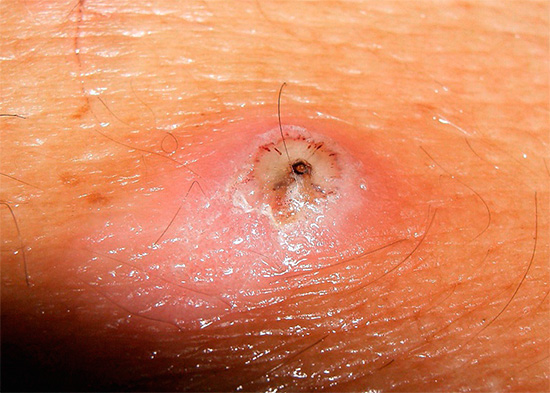
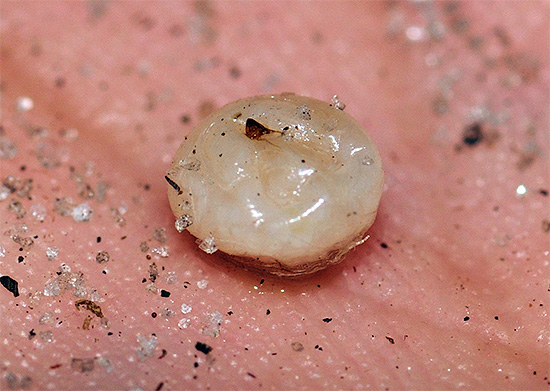
And, finally, mosquito bites, well known to all of us. As a rule, the result of the attack of these insects is a relatively moderate (and in some people - almost imperceptible) itching. However, with massive bites, a person's condition can deteriorate greatly, up to fever, nausea and vomiting.
In the photo - a mosquito at the time of the bite:
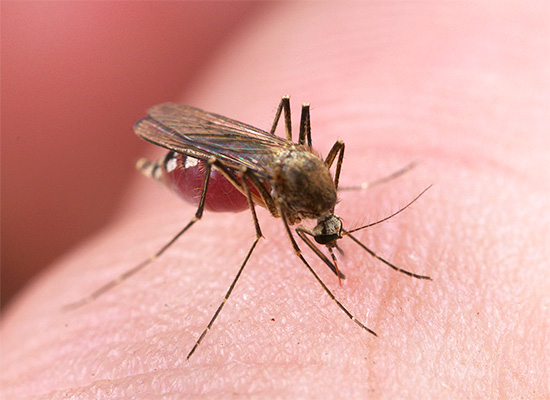
Despite the fact that the bites of many insects have certain distinctive features, nevertheless, it is always useful to determine exactly which insect has bitten. This is especially true for pregnant women and young children, when during treatment it is necessary to take into account all the pros and cons when deciding whether to take a particular drug.
Consultations for parents (by doctors) about insect bites are much more complicated if it is not clear who, in fact, bit the child. The treatment of the bite of an "unknown" insect may not be optimal, and does not always guarantee a reliable result: imagine that a child was bitten by a poisonous spider, but the parents vaguely assume that it was, for example, a wasp sting...
Review
“From the feel of it, it hurts a lot. Pain is the first thing that comes to mind. At first I thought that they stumbled upon a hornet's nest, but wasps bite not so painfully. Yes, and I never observed a special reaction - it was swollen and swollen, and then it throws it into the heat, then it throws it into the cold, some kind of cyanotic leg, it shakes all over.The neighbors later enlightened that it was the hornets who got used to them, and I was also lucky that I got off with two bites. But this is really creepy! I'm afraid to think what would happen if they bit the child.
Elena, Ryazan
Some symptoms and complications of insect bites
As mentioned above, the consequences of insect bites can be different: it depends on the sensitivity of the victim himself, and on the species of the arthropod. So, for example, the result of an attack by a stinging insect is determined mainly by the reaction of the human body to the injected poison, and the type of insect here fades into the background.
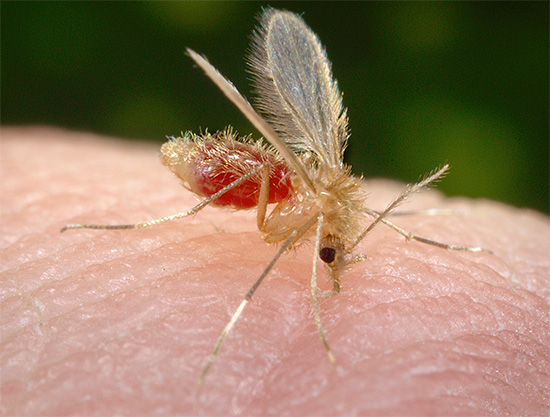
In general, among the most common symptoms typical of insect bites, the following can be distinguished:
- local reddening of the skin, characteristic of the bites of almost all insects;
- itching or pain, the degree of manifestation of which depends on the individual sensitivity of the person and the composition of the enzymes injected under the skin;
- small or extensive, and sometimes spreading to the whole body, edema;
- dermatitis that occurs in response to mass bites;
- high temperature, characteristic for the most part of victims of stinging insects and spiders (however, the temperature can rise with multiple bites of bed bugs and even mosquitoes);
- general intoxication of the body, accompanied by headaches, nausea, chills, swollen lymph nodes.
In some cases, in response to the bites of poisonous spiders, tropical ants or hornets, extensive subcutaneous hemorrhages, angioedema, and anaphylactic shock may develop. Another serious and rather dangerous symptom can be ulcers that appear, for example, at the site of non-healing bites of tropical (sandy) fleas (more precisely, these are not even quite bites, but the consequences of introducing a female flea under the skin).
In the photo - bites of parasitic insects (linen lice), the treatment of which did not start on time, as a result of which pustular inflammation developed on the affected areas:

As a rule, small swellings and itchy bites do not require special treatment: they will pass on their own within a few days. First of all, those bites that are accompanied by severe swelling, inflammation, allergic reactions and poisoning require treatment.
Insect bites in children
In general, insect bites in children develop the same consequences as in adults, however, in babies, individual symptoms are sometimes very pronounced, and sometimes even take a dangerous form. It is in children that extensive rashes most often appear, the temperature rises, for example, in the event of an attack by hymenoptera insects (bees, wasps, bumblebees, hornets).
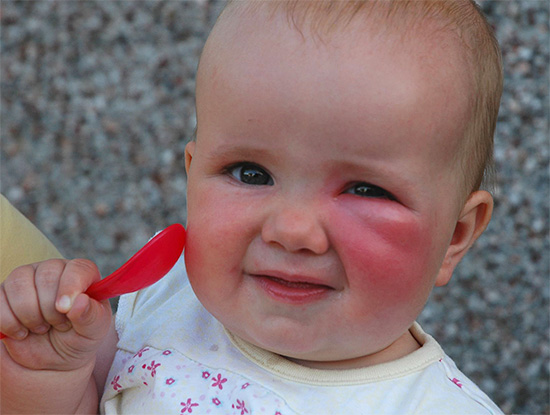
At the same time, hypersensitivity is not typical for children and, as a result, they experience Quincke's edema or anaphylactic shock less often than adults.
As practice shows, one of the problems with insect bites in children is their nervous excitement in response to pain and itching, as well as constant scratching of the affected areas of the skin, due to which an infection can be introduced into the wound. The task of the parents in this case is, if possible, to treat the bite site with suitable means for babies that relieve itching, antiseptic the wound, and also distract the child from his misfortune with something - for example, an exciting game.
Treatment of bites of mosquitoes, fleas, bedbugs and other small bloodsuckers
Usually, the main task in the treatment of bites of small blood-sucking parasitic insects is to relieve itching and reduce swelling of the affected skin. More often this problem has to be solved in children, especially the smallest, who sometimes react very sharply even to seemingly harmless mosquito bites.

The first thing to do is to lubricate such a bite with a suitable ointment or cream. Well suited for this are hydrocortisone ointment, Menovazin, Fenistil-Gel, Mosquitol or Off for the treatment of insect bites in children. It is only important to study the instructions for the product before use and evaluate the possibility of using it in this particular situation - taking into account the age of the child, his state of health, etc. (it is recommended to consult a doctor).
And further: List of blood-sucking insects that can bite you in bed or on the couch (the article has more than 20 comments)
In those situations when the child has scratched the bites strongly, to the point of blood, it makes sense to lubricate them with the Rescuer or Levomekol balm. This will protect the wound from infection. With severe itching and swelling, it can be useful to put cold on the bite and distract the child with a game.
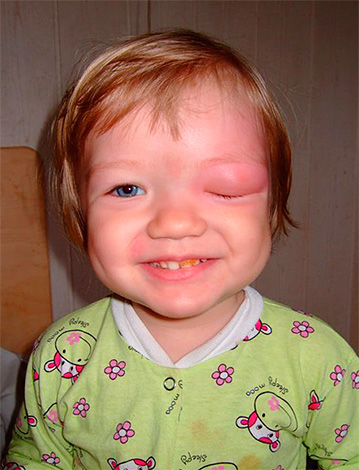
On a note
Homeopathy for insect bites is useless. Such remedies only soothe the bitten with the thought that he was treated. Homeopathic ointments do not have any therapeutic effect.
In some cases, after being bitten by even small parasitic insects, the victim may need to be taken to the hospital - in particular, when the following alarming symptoms appear:
- Fever;
- Chills;
- Headache;
- Vomit;
- Enlarged lymph nodes.
There are many diseases that parasitic insects can carry. These are life-threatening typhus, malaria, plague, brucellosis and many others. Therefore, at the very first symptoms described above, the victim should immediately be shown to the doctor.
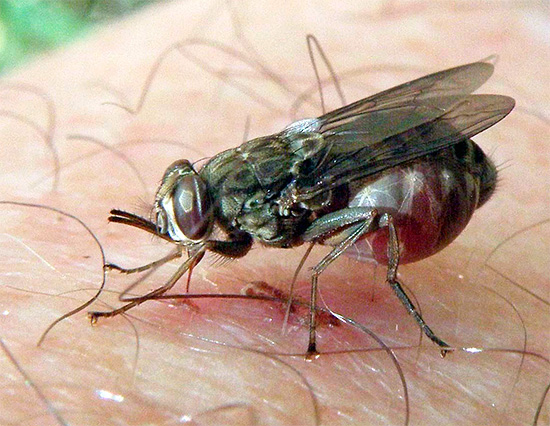
On a note
The vast majority of malaria cases worldwide are children under 5 years of age. Therefore, their condition after massive mosquito bites should be monitored especially carefully.
What to do if bitten by a bee, wasp or hornet
The first thing to do if you are stung by an insect is to check if there is a sting in the wound (although only bees leave it, in which, unlike wasps and hornets, it is jagged).
If a bee stings, you need to carefully remove the sting from the skin as soon as possible (for example, with tweezers). Keep in mind that if you try to grab the sting with your fingers, then the vial of poison located above the torn off sting will be squeezed (see an example in the photo below), and an additional part of the poison will flow under the skin, increasing pain.
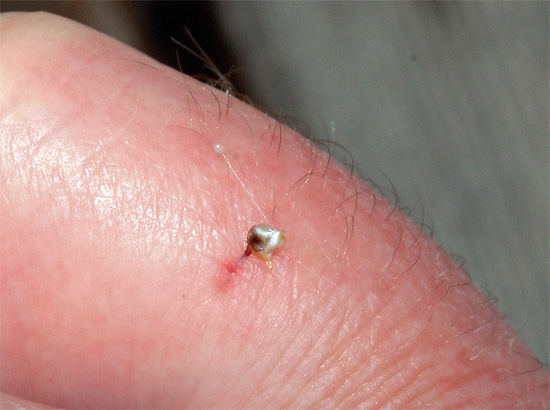
Then, from a fresh wound, you need to try to suck out the poison. At the same time, it is impossible to squeeze it out with your fingers - this only increases blood circulation and leads to the rapid growth of edema. Two or three applications to the wound of the mouth will be enough, you should not spend more than 1 minute on suctioning the poison.
On a note
It is useful immediately after sucking off part of the poison to lubricate the wound with some kind of antiseptic - for example, hydrogen peroxide.
Then a cold compress is applied to the bite site: the cold will narrow the blood vessels and reduce the rate of absorption of the poison into the blood (this is especially important for allergy sufferers, since this minimizes the dangerous effect of the poison on the body as a whole, and at the same time the toxins continue to decompose continuously in the skin without getting into in large quantities in the blood).
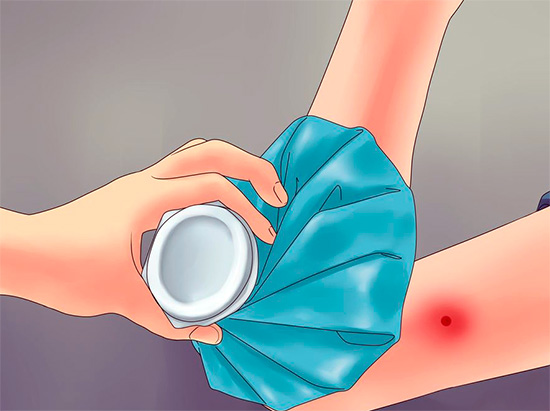
A person who has been bitten by a stinging insect should be carefully observed. If alarming symptoms of a dangerous allergy appear (shortness of breath, headache, heart pain, etc.), you should immediately call an ambulance and get appropriate advice. Most likely, at least recommendations will be given on taking antihistamines (Suprastin, Diphenhydramine) while the doctor is expected to arrive.
Important!
If the victim has previously experienced severe reactions to insect bites, he should always carry a special adrenaline auto-injector (Epipen), or a set of syringe and injections prescribed by a doctor, with him at all times. Such remedies should be used immediately after the bite, without waiting for the manifestation of an allergy: in some cases, the allergy develops so rapidly that literally two minutes is enough for a person to lose consciousness.

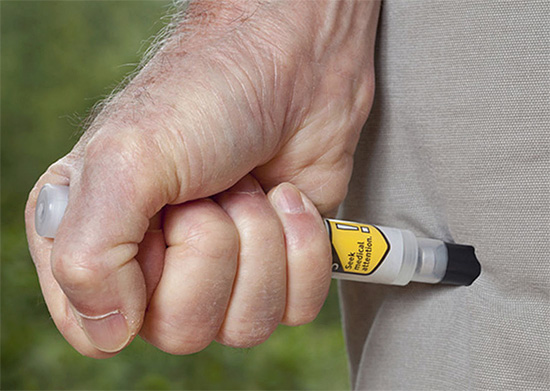
Treatment of tick bites
The first thing to do if the tick has already stuck is to carefully remove it from the wound.
It is dangerous to try to unscrew the tick from the wound. At first glance, it may seem that he plunges his head into the skin so deeply that you can’t just pull it out, but you can only unscrew it. This is a mistake: when twisting, there is a very high risk that the head of the tick will come off and remain in the wound.

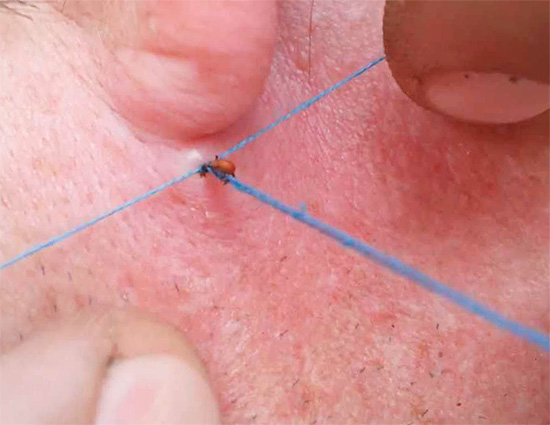
After removing the tick, a small bump usually remains at the site of the bite.This is not scary - it is enough to lubricate the wound with iodine or hydrogen peroxide for disinfection. The same is done if the head of the parasite still remains in the wound.
After a tick bite, you should consult a doctor in the following cases:
- If the tick has bitten in an area with a high risk of contracting encephalitis. For Russia, this is the Urals and Siberia up to the Far East, for Kazakhstan - the mountainous regions in the east of the country, in Ukraine there are no such regions. Usually people know that they are in an encephalitis-prone area, and take measures in advance to prevent tick bites.
- If clearly defined red circles and spots appear at the site of the tick bite (this is a sign of Lyme borreliosis, which is treated only in the hospital).
- If a few days after the tick bite, symptoms of encephalitis began to appear - headache, nervous disorders.
The tick removed from the wound must be placed in a glass vial and submitted for analysis.
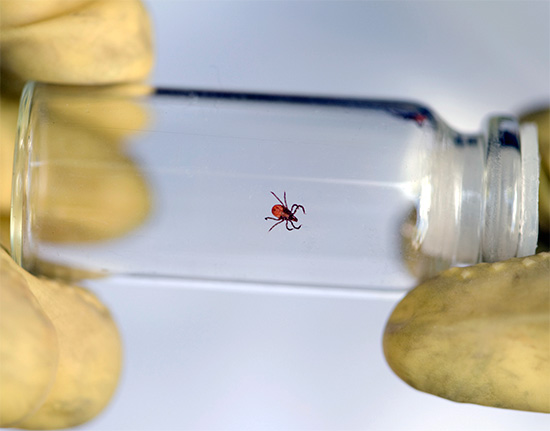
No antibiotics can be used for tick bites on their own! All funds are prescribed only after diagnosis and only in the hospital.
If the patient is diagnosed with Lyme disease, he is prescribed a course of antibiotics.
If the victim is bitten in the encephalitic zone, he is injected with a special serum with anti-encephalitic antibodies. It is expensive, and not every hospital has such funds. However, no home treatment will help in this case.
First aid for bites of poisonous spiders
The treatment of poisonous spider bites is somewhat similar to that of wasp and hornet bites, but due to the increased danger of poison to human life, it is even more radical.

The first thing to do is:
- Suck the poison out of the wound.Some naturalists even recommend making a cut with a blade or knife along the wound and squeezing out the blood, but in the absence of experience and a clean knife at hand, such actions can be dangerous, so it is better not to carry them out;
- Gently cauterize the wound until the protruding blood turns black;
- Get to the nearest hospital as soon as possible.
No antihistamines and pills will help with the bites of karakurt and scorpions. The only effective means in this situation are special sera with the appropriate antibodies. During the delivery of the victim to the hospital, symptomatic treatment can be carried out: bring down the temperature, if it is too high, give painkillers.
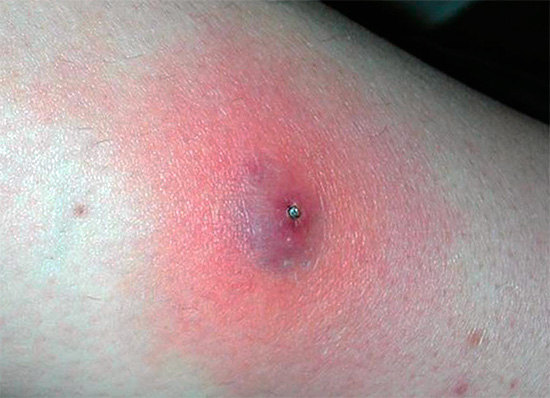
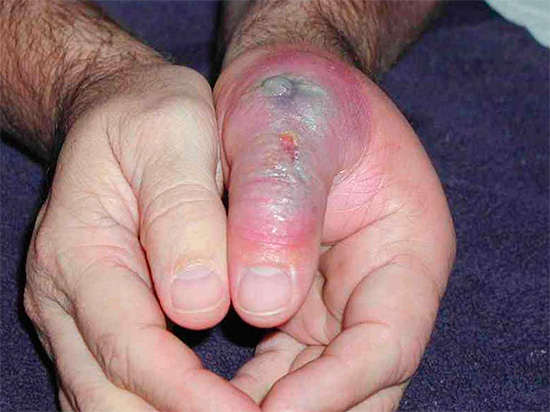
But ideally, insect bites should not be treated, but prevented. To do this, when going out into nature, you should:
- Dress in clothes with discreet colors and in such that covers the maximum surface of the body;
- In places with a large number of ticks, wear long-sleeved shirts, tuck them into pants, tuck pants into socks. It is also advisable to wear a windbreaker with puffs at the wrists and ankles;
- Do not drink from opaque vessels - if a wasp climbs into the bottle, and then gets into the esophagus and bites from the inside, then the situation can be very difficult;
- Eat a minimum of sweets in nature;
- If a stinging insect, spider, wasp nest is found - slowly leave;
- Do not check hollows and burrows with your hands;
- Regularly examine each other for the presence of ticks on the body. Particular attention should be paid to the scalp, ears, armpits, groin;
- Use repellents for those parts of the body that are not covered by clothing;
- Use mosquito nets and mosquito nets.
Remember: more people are constantly dying from insect bites all over the world in general and in our country in particular than from attacks by large mammals. And in most cases, such deaths occur due to inattention, neglect of the elementary rules of safe behavior in nature and the belief that "maybe it will blow over." Therefore, be careful and careful, take care of yourself!
Useful video: what is important to know about insect bites, methods of treatment and emergency care

